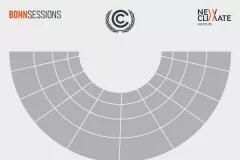For a second year in a row, the world continues to break temperature records as greenhouse gas emissions rise, leading to more extreme heat and flooding events that are taking lives and displacing many around the globe. Governments are expected to submit their climate targets - or new Nationally Determined Contributions (NDCs) - by early 2025, with targets for 2035.
However, the CAT analyses have continued to show that both individual country and collective mitigation ambition for 2030 targets is not in line with the level of action needed to limit warming to 1.5°C. Of even more concern: governments are not implementing enough policies and actions to meet even those insufficient targets.
From November this year, national governments need to submit 1.5°C aligned 2035 NDC targets but for the world to meet the Paris Agreement’s 1.5˚C temperature goal, they need to move to emergency mode and strengthen the ambition of their 2030 NDC targets and current policy action. Targets and action for 2030 needs to align with the pathway to net CO2 zero emissions by 2050 globally, which should also then define the NDC targets for 2035.
A failure to substantially increasing the ambition of current 2030 targets and action would mean limiting peak global warming to 1.5°C will not be possible and would likely lead to a multi-decadal, high overshoot of this limit, even if followed by strong 2035 targets.
In this briefing, the Climate Action Tracker (CAT) highlights four key elements for what is needed from the next round of NDCs for 2035: they need to be ambitious, fair, credible, transparent, and include aspects of climate finance and a just and fair transition.

Ambition
- Governments need to switch to emergency mode and revise both their 2030 targets and current policies to include substantial emissions cuts and significantly contribute to closing the 2030 emission gap if the world is to have a significant chance of limiting warming to 1.5°C.
- Governments should propose ambitious 2035 NDC targets aligned with a 1.5°C compatible net-zero pathway by early 2025 so that COP30 in Brazil can fully evaluate progress towards 1.5° alignment.
- Ambitious country-wide NDC targets need to be built on sectoral targets and plans, informed by 1.5°C compatible benchmarks and contribute to the global sectoral targets from the Global Stocktake.
Fairness and finance
- Developed countries need to significantly scale up international climate finance and other means of support.
- Developed countries should set 1.5°C aligned domestic mitigation targets in their NDCs and communicate the financial and other support they will provide to developing countries.
- Developing countries should clearly communicate the climate finance they need to set and achieve ambitious 1.5°C aligned conditional targets.
Credibility
- Credible NDCs should build on robust national planning processes that translate the economy-wide emissions reduction target into action in all sectors.
- Governments need to ramp up implementation of their existing targets and further develop policies to close the – still significant – emissions gap between current policies and 1.5°C compatible pathways.
- Contradictory policies must be addressed and reversed: fossil fuel production needs to phase out, while fossil fuel exploration and fossil fuel subsidies need to stop.
Transparency
- Governments should set absolute, economy wide, emission reduction target trajectories including all GHG gases, specifying the emissions levels for each year as X MtCO2e (excluding LULUCF) so they are clear, transparent, and immune to creative accounting.
- NDC targets should primarily focus on their domestic reductions by decarbonising all sectors of the economy rather than relying on forestry sinks, other carbon dioxide removal (CDR) or carbon markets.
- Governments should clearly and transparently communicate the following elements (additional to their domestic target):
- The domestic contribution of forestry and land use.
- The expected contribution of other CDR by type.
- NDC targets should primarily focus on their domestic reductions by decarbonising all sectors of the economy rather than relying on forestry sinks, other carbon dioxide removal (CDR) or carbon markets.
For more detail, please read the briefing in full on the CAT website or for more information about a specific country, view our country assessments.







